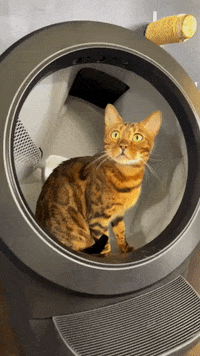Tackling Common Behavioral Problems in Cats: A Comprehensive Guide
Transform your feline friend’s behavior with practical insights.

Cats, with their enigmatic personalities, can sometimes develop behavioral problems that perplex even the most patient pet owners. Understanding these issues and addressing them effectively is crucial for a harmonious relationship. Here’s a detailed guide on common cat behavioral problems and how you can address them:
Scratching Furniture

Cats have a natural instinct to scratch—it helps them mark territory, stretch their muscles, and keep their claws sharp. However, your furniture doesn't have to be the casualty.
- Provide Alternatives: Invest in sturdy scratching posts or pads. Position them near the furniture your cat tends to scratch.
- Use Deterrents: Apply double-sided tape or a citrus-scented spray on the furniture to make it less appealing.
- Positive Reinforcement: Reward your cat with treats and affection when they use the scratching post.
Litter Box Issues

Inappropriate elimination can be frustrating, but it's often caused by a few key issues.
- Cleanliness is Key: Ensure the litter box is clean. Scoop it daily and change the litter regularly.
- Right Location: Place the litter box in a quiet, accessible area. Avoid high-traffic zones or noisy appliances.
- Medical Check-Up: If problems persist, consult your vet to rule out any medical conditions like urinary tract infections.
Aggression Towards Other Pets

Aggression between cats or towards other pets can disrupt household harmony.
- Slow Introductions: Gradually introduce new pets. Keep initial meetings short and supervised.
- Create Personal Spaces: Ensure each pet has its own space to retreat and relax.
- Behavioral Training: Use positive reinforcement to reward calm behavior and consult an animal behaviorist if needed.
Excessive Meowing

While some cats are naturally vocal, excessive meowing can be an indicator of various issues.
- Attention Needs: Ensure your cat is getting enough mental and physical stimulation.
- Hunger or Thirst: Verify that your cat's food and water needs are met.
- Health Checks: Persistent meowing may indicate a health problem; consult your vet to exclude any medical issues.
Anxiety and Stress

Cats can get stressed due to changes in their environment or routine.
- Safe Spaces: Create a quiet, cozy spot where your cat can retreat.
- Consistent Routine: Maintain a consistent feeding and play schedule.
- Pheromone Products: Use synthetic pheromones like Feliway to create a calming atmosphere.
Overgrooming

Overgrooming can lead to bald patches and skin infections.
- Identify Triggers: Determine if the cause is medical, environmental, or psychological.
- Reduce Stress: Provide regular playtime and mental stimulation to distract from overgrooming.
- Vet Consultation: Seek veterinary advice to rule out conditions like allergies or parasites.
By understanding and addressing these common behavioral problems, you can ensure that your feline friend remains a happy and well-adjusted member of your household.

Have these tips transformed your cat's behavior? Share your experiences with us!
For more pet care insights, follow our blog and keep your furry friends flourishing. 🐾
Tags:
All about cats
